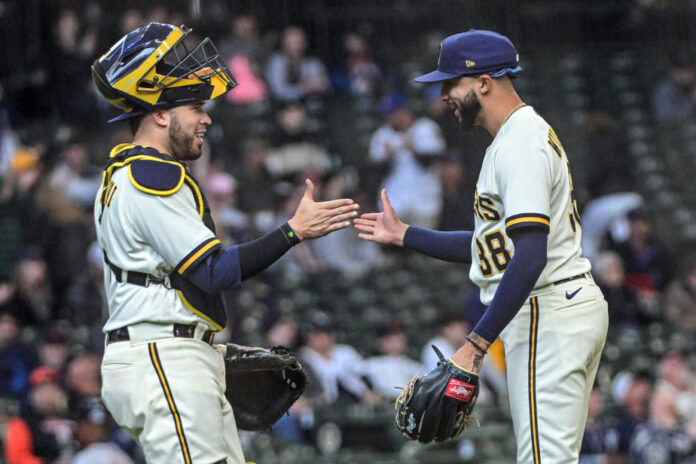(Montreal) In baseball, pitchers have always had the option of refusing a pitch called by their catcher. With new technology, the power is now completely in their hands.
For the past few seasons, in order to counter signal theft, pitches have been called electronically between the catcher and the pitcher. A small keyboard connected to a transmitter allows the two players to communicate well with each other. Signals are used only in the event of a technical glitch.
The novelty is that several pitchers this season have the keyboard to call pitches directly instead of waiting for suggestions from their receiver.
“It didn’t surprise me to see that, but I’m glad they gave (that power) to the pitchers,” Gagné said when reached by The Canadian Press at his home in Arizona. To kill downtime, there is nothing better. When you have a solid plan and want the game to flow better, no one is better placed than the pitcher to do that. If you have to wait for signals from the receiver, you’re wasting time. It was one-sided at first, but now it’s a dialogue and I think it’s great. »
Same story on the side of Michel Laplante, who launched up to the AAA level in the organizations of the Atlanta Braves and the Montreal Expos.
While technology makes things easier—and greatly speeds up encounters—strategies to prevent signal theft shouldn’t be thought to be new.
“When I played, the pitcher had some control, adding or taking away cues by rubbing his glove above or below his belt,” said Claude Raymond, who enjoyed a solid 12-season career with four major league organizations, including the Expos, between 1959 and 1971.
“If your catcher showed you a finger, for a quick, you could ‘increase’ or ‘subtract’ that code by rubbing your glove on yourself. At the top of the belt, to increase, at the bottom to descend. So his rapid could become a curve if you rubbed your glove on your shirt once, or a gearshift if you rubbed on your leg, going down from 1 to 3.”
That pitchers decide their shots is nothing new. But MLB’s desire to up the tempo of games brought about this “handover” from catcher to pitcher.
“With the pitchers now having five or six different pitches, you can’t afford for him to refuse signals two or three times,” notes Gagné, winner of the Cy-Young in the National with the Los Angeles Dodgers in 2003. […] It’s really smart. You’re not changing the sport too much by doing that. No one is going to take offense and it really picks up the pace. »
Raymond agrees… and throws a small arrow at the batters, by the way!
If young pitchers will continue to rely on their receiver, more experienced pitchers will take the opportunity to give themselves more control, our panel believes.
“The reason the pitcher decides is that bad selection with determination is always better than good selection without determination,” explained Laplante. The reason you’re throwing, you’re supposed to understand. If in an X situation, it would be better to send a rapid, but I have a grip for a curve and I really feel it, my throw with conviction (my curve) is going to have more bite than my throw with hesitation (the quick one).
“As the pitcher is now the instigator, there is no such hesitation. You weigh on the piton and you decide what you want. Pitchers who have that belief in them become even stronger because they have their plan in mind. »
Words that resonate with Gagné.
“If as a pitcher you intend to throw a curveball on the next shot and your catcher asks you something else, it puts a doubt in your head. If it’s the opposite, the receiver will understand that it’s a good idea! »
Laplante admits, however, that it takes a certain amount of confidence, which he did not acquire until he was 26 or 27 years old.
“It takes a lot of pigheadedness to call your match as soon as you level up. Some do: guys who’ve been top picks their whole lives, for example. The receiver adapts and the pitcher will learn the lessons he will have to learn.
“Now, where it all turns upside down is when you go up from one level to the next, to AA, AAA or Majors. You have never faced these teams and your receiver knows them, because he has been there for a few years. In this case, you will follow your receiver more. »
This can lead to some frustration.
“Sometimes you regret it so much! You see your 108 pitches on the bus or on the plane and you say to yourself: “Shit!” That’s not what I wanted to throw and I got hit! “,” admits Laplante, who would have loved to find himself in control of the keyboard.
Gagné also believes that this new formula will be formative, a significant benefit in his eyes.
“It will also help the learning of young receivers who know their pitchers less. They will learn how they throw. Communication between them will improve faster. »
Did Major League Baseball expect to accomplish so much with this keyboard? So far, it’s a circuit…















